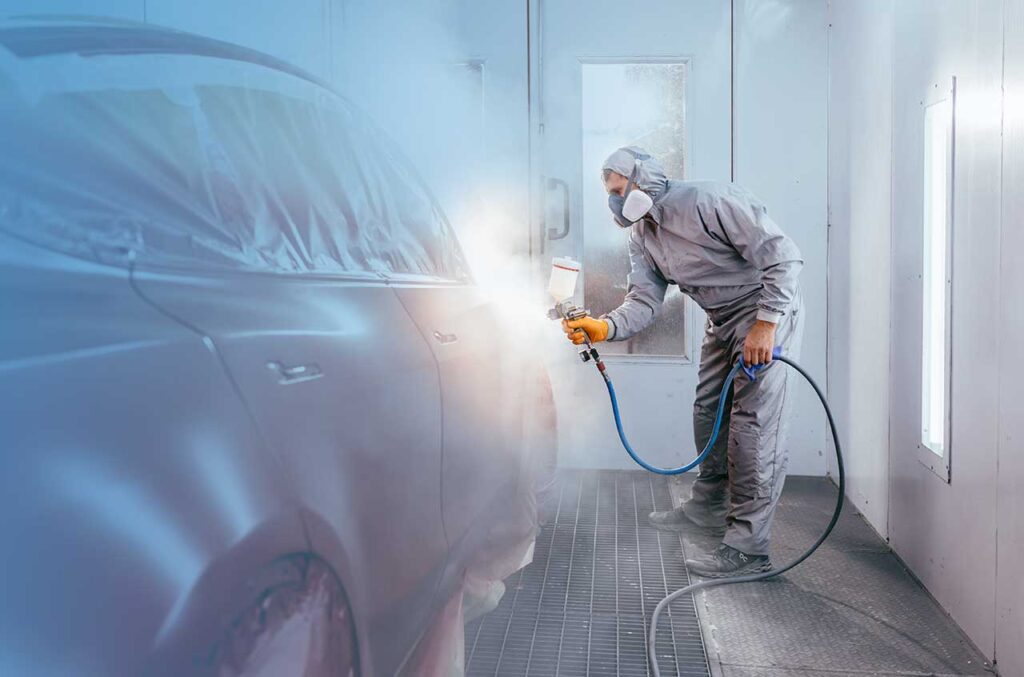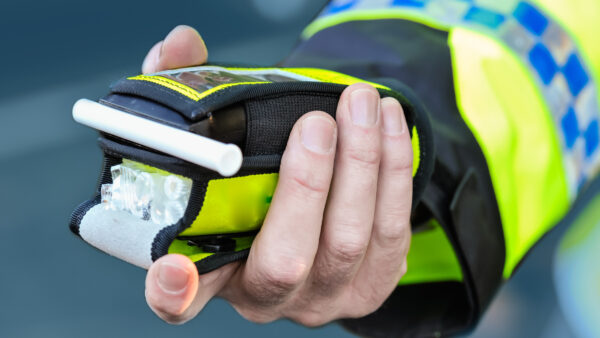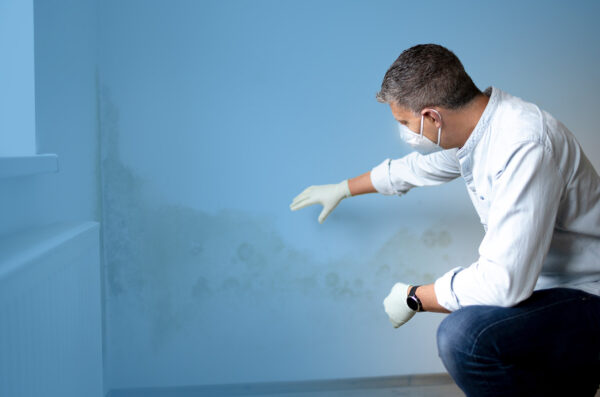Ensuring safety in paint spraying
Paint spraying — especially using isocyanate-based paints — poses serious health risks such as occupational asthma and dermatitis. Exposure can occur during spraying, mixing, curing, sanding and cleaning processes. Safety depends on proper training, ventilation, and the consistent use of personal protective equipment (PPE) and respiratory protective equipment (RPE).
Understanding isocyanate paints
Isocyanates are commonly found in vehicle paints. They present significant health risks through both inhalation and skin contact. Only trained workers should handle these materials using the correct protective measures.
Key risks include:
- Respiratory hazards: Inhaling paint mist can lead to asthma and other serious lung conditions.
- Skin exposure: Contact with isocyanates can cause allergic reactions and dermatitis.
- Workplace contamination: Inadequate controls can expose others in the area to residual chemicals.
Controlling exposure: key protective measures
- Mix and clean paint in designated, well-ventilated areas
- Use spray booths under negative pressure to contain mist
- Keep containers sealed when not in use
- Maintain ventilation systems and inspect LEV regularly
- Wear and frequently replace appropriate PPE and RPE (e.g. disposable overalls, nitrile gloves)
- Ensure breathing air quality in spray booths is regularly checked
- Label and securely store hazardous waste
Respiratory Protective Equipment (RPE)
Fine mist from spraying can enter the lungs if RPE is not properly fitted or used. The following best practices apply:
- Air-fed breathing apparatus must be worn when spraying, during gun cleaning, and throughout clearance times
- Fit testing is required for tight-fitting RPE — facial hair can compromise protection
- RPE should only be removed in designated safe air zones following strict procedures
- Breathing apparatus must be cleaned, maintained and inspected regularly
- Compressed air supplies must be tested at least every three months, unless a risk assessment justifies longer intervals
COSHH regulations and your legal duties
The Control of Substances Hazardous to Health (COSHH) Regulations require employers to assess, control and monitor exposure to harmful substances such as paints, adhesives, fumes, dust and vapours.
Routes of exposure include:
- Inhalation: Breathing in harmful substances
- Ingestion: Swallowing chemicals via contaminated hands or food
- Skin absorption: Chemicals passing through the skin
- Injection: Accidental punctures introducing materials into the body
- Eye contact: Splashes, mists or vapours entering the eye
All hazardous substances must be clearly labelled with hazard symbols. Employers must review Safety Data Sheets (SDS) and provide controls such as ventilation, PPE, RPE and training. Diisocyanate-specific training is mandatory and must be renewed every five years for relevant workers.
Health surveillance
Health surveillance is essential for early detection of ill health and includes:
- Annual biological monitoring for isocyanate exposure
- Lung function testing
- Regular skin checks
Commitment to workplace safety
Managing isocyanate risks is not just about compliance — it’s about protecting long-term health. Employers should:
- Regularly review and update control measures
- Provide ongoing training on safe handling practices
- Conduct health checks and exposure monitoring
Need help managing spray paint safety?
We support employers with COSHH assessments, training, health surveillance and exposure control. Speak to our team to protect your people and stay compliant.



